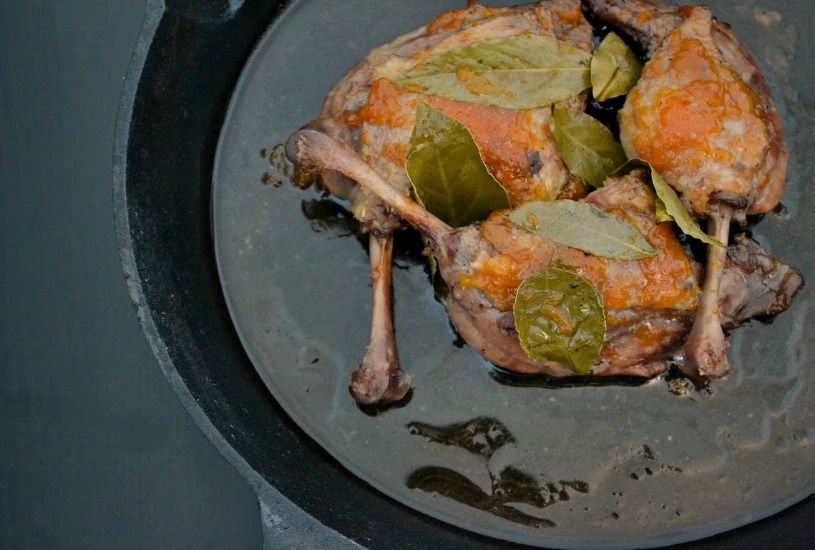 Duck is richer and darker than Turkey or Chicken. It also has a higher bone to meat ratio, so we recommend allowing 1 1/3 – 1 1/2lbs per person. Duck is also full of delicious fat (which can be rendered and used for other purposes); when roasting, a few simple steps allow you to handle the overflow of fat in such a way that results in a crispy-skinned tender delicious beauty.
Duck is richer and darker than Turkey or Chicken. It also has a higher bone to meat ratio, so we recommend allowing 1 1/3 – 1 1/2lbs per person. Duck is also full of delicious fat (which can be rendered and used for other purposes); when roasting, a few simple steps allow you to handle the overflow of fat in such a way that results in a crispy-skinned tender delicious beauty.
Common Duck Cooking Methods and Flavors
Duck’s rich flavor pairs well with arromatic fruits such as oranges, bitter oranges, cherries, appricots and plums. You can roast the bird plain and serve with preserves or gently stewed fresh fruit, or follow a recipe such as Duck à l’Orange or Cannard aux Cerrises. Duck is enjoyed with sauerkraut in many parts of Europe. It’s also a favorite in Asia, where it melds especially well with soy, miso, and terriyaki flavors.
Duck Confit is a very common and spectacularly delicious cooking technique. The duck meat (usually the legs, which are tougher) is submerged in rendered duck fat and cooked slowly at a low temperature for several hours. Save extra fat from your whole duck to render and use for confit, or other cooking application.
Roasting Tips for Whole Duck
- Gently score the skin (don’t cut all the way through) in a diamond pattern before roasting (this will allow the fat to render out) or prick skin all over with a fork.
- If you like, insert a whole lemon, apple or potato into the cavity of the bird to absorb any off-flavors. Discard after roasting.
- We don’t recommend stuffing whole duck since the excess fat can make the stuffing a little heavy; cook the stuffing on the side and drizzle liberally with pan drippings instead!
- Preheat oven to 450F. Put bird in a Dutch oven or high-sided roasting pan (to reduce splatter in your oven). Add the bird and reduce heat to 350F. Allow 20 minutes per pound. Drain fat every 30 minutes as it renders out (strain through cheese cloth into a clean jar and store in the fridge or freezer), 2-3 times or until most of the fat has rendered out.










